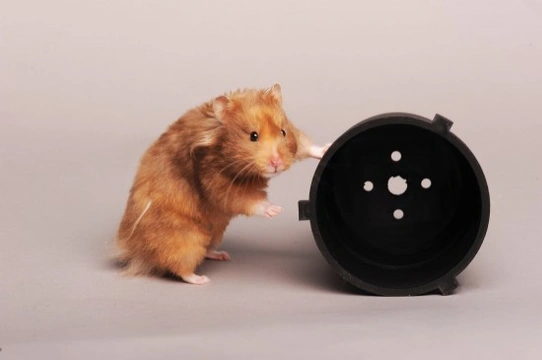Goldhamsters, often simply referred to as hamsters, are beloved small rodents cherished as pets by people around the world. While they may seem like simple creatures, there’s a lot more to them than meets the eye. From their fascinating behaviors to their unique biology, here are some fun facts you probably didn’t know about Goldhamsters.
1. Origin and History
Goldhamsters are native to Syria, where they were first discovered in the deserts of the Middle East. They were initially used as laboratory animals for scientific research before becoming popular pets in the 1930s. Since then, they have been selectively bred to create various breeds with different coat colors and patterns.
2. Nocturnal Creatures
One interesting fact about Goldhamsters is that they are nocturnal, meaning they are most active during the night. This behavior is thought to have evolved as a survival mechanism to avoid predators in the wild. While they may sleep for long periods during the day, Goldhamsters can be quite lively and energetic once the sun sets.
3. Cheek Pouches
One of the most distinctive features of Goldhamsters is their cheek pouches, which they use to store food. These pouches can stretch to many times the size of their heads, allowing them to carry large quantities of food back to their nests. This adaptation helps them survive in the wild where food sources may be scarce.
4. Teeth Growth
Goldhamsters are rodents, which means they have continuously growing teeth that they must wear down to prevent overgrowth. To keep their teeth in check, they gnaw on hard objects such as wood, cardboard, and even their cage bars. Providing them with chew toys is essential for their dental health.
5. Social Creatures
While Goldhamsters are often kept as solitary pets, they are actually social animals in the wild. They live in burrows with complex tunnel systems and often form colonies with other hamsters. However, when kept as pets, they may exhibit territorial behavior and should be housed alone to prevent fights.
6. Lifespan
On average, Goldhamsters live for around 2 to 3 years in captivity, although some may live longer with proper care. Factors such as genetics, diet, and environment play a significant role in determining their lifespan. Providing a balanced diet, a clean living space, and regular veterinary check-ups can help ensure a Goldhamster lives a long and healthy life.
7. Breeding
Goldhamsters have a short gestation period of around 16 days and can have large litters of up to 12 pups. However, they are not necessarily good parents and may sometimes cannibalize their young or abandon them. Therefore, proper care should be taken to separate males and females unless breeding is intended.
8. Sensitive to Heat
Goldhamsters are sensitive to high temperatures and can suffer from heatstroke if exposed to extreme heat. It’s essential to keep their living environment cool and well-ventilated, especially during hot summer months. Providing plenty of fresh water and avoiding direct sunlight can help prevent heat-related illnesses.
9. Varieties
Over the years, breeders have developed numerous varieties of Goldhamsters with different coat colors, patterns, and fur lengths. From the classic golden Syrian hamster to the long-haired Teddy bear hamster and the dwarf Campbell hamster, there’s a wide range of options to choose from for prospective pet owners.
10. Emotional Creatures
Contrary to popular belief, Goldhamsters are capable of forming bonds with their owners and can experience a range of emotions. They may show affection by grooming their owners or seeking out their company. Building trust through gentle handling and regular interaction is key to developing a strong bond with a pet Goldhamster.
In conclusion, Goldhamsters are fascinating creatures with a rich history and unique characteristics. Whether you’re a seasoned hamster owner or considering getting one as a pet for the first time, learning more about these small rodents can deepen your appreciation for them and enhance your bond with your furry companion.

